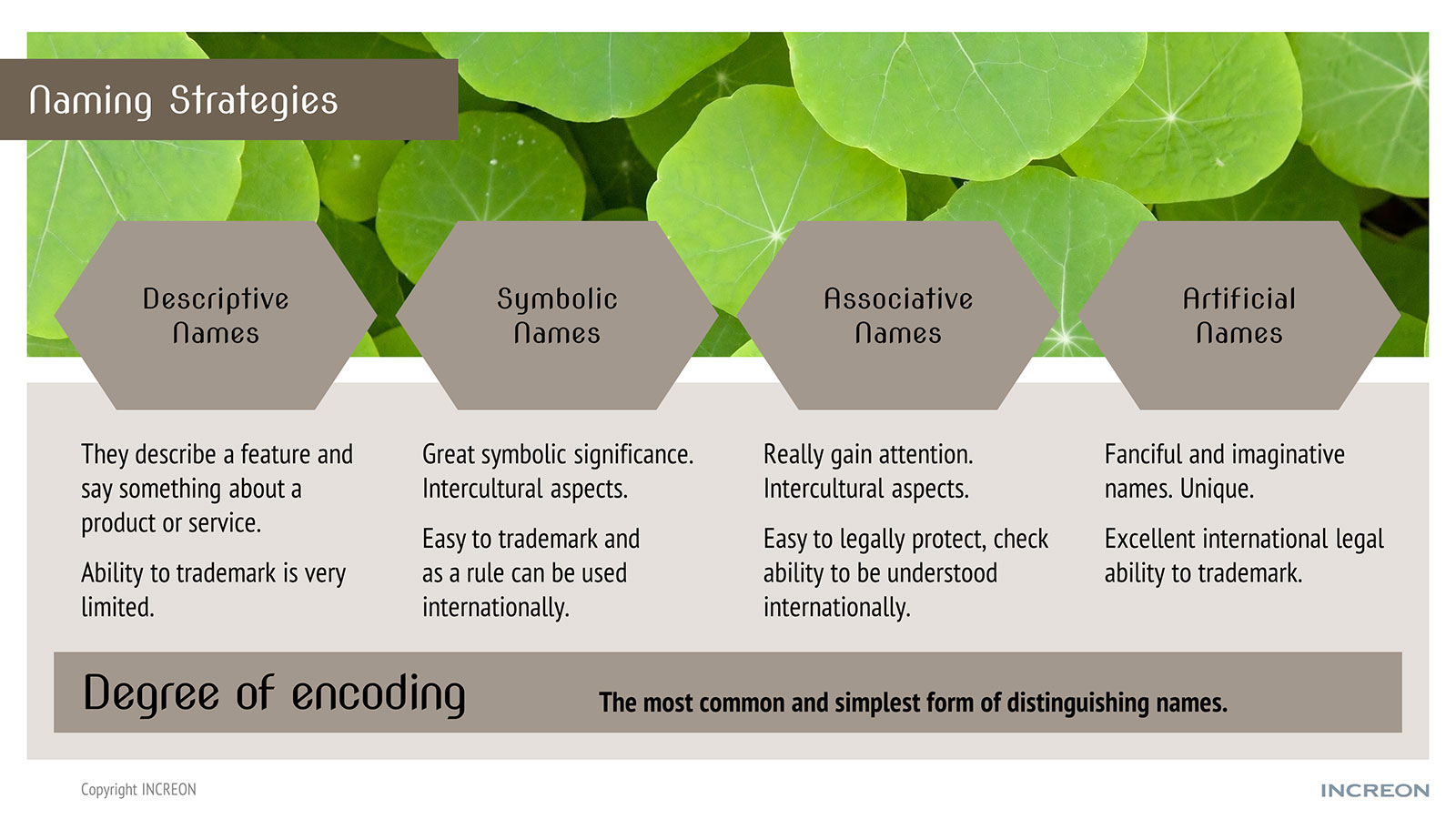
Naming strategy. A concept leads to success.
The naming concept can give rise to independent brand names and name systems which support assertions about products or product features, about the nature or use of a product, or about the origin or quality of a product. At the same time, the challenge is to define a naming strategy for brand names that fits to the originator and is laid out for the future such that it also fits the products that may later be included.
Of course, a variety of strategic naming approaches for naming companies, products, and services exists. Structural aspects, the content of the message, sources of naming development, and the degree of encoding are possible starting points.
Various naming concepts during the naming process
The degree of encoding of a brand name is a common, and also simple form of naming strategy, even though there are no extremely clear demarcations between the various naming approaches. But it becomes clear where the strengths and opportunities of various naming concepts lie.
With the degree of encoding, when creating a name, there are four approaches:
- Descriptive names convey a concrete message through descriptions anyone can use. They describe a feature or property and directly say something about the product or service. What makes the product or service unique is the originator. Descriptive names are usually apt, easy to understand, and easy to learn — assuming that the multilingual demands are not too high. Their ability to be protected legally (during trademark registration) is often strongly limited. Because of this, imitation by competitors cannot be ruled out. Additionally, when a company or a product further develops itself, a descriptive brand name can be limiting. Often, they are only pronounceable in a given country or language and are mostly not able to be fully protected legally (as a trademark).
- Symbolic names derive their success from symbolism and often build analogies with “is like ….” Well chosen, they are mostly relatively easy to protect (during trademark registration) and can be used internationally. However, intercultural aspects must definitely be paid attention to, because not all symbolism of a brand name is interpreted or understood the same in every cultural group.
- Associative names depend on known terms that are oriented to words, images, or other symbols. Such brand names demand attention. Through their high creativity, they are typically easy to protect well because of their originality. Given the international use of the brand name, intercultural and linguistic aspects need to be checked when using an associative name.
- Artificial names are neutral coined, invented, or imaginative names. They have no real meaning. Artificial names usually pass the linguistic, cultural, and brand legality aspects of screening and normally can be protected legally as trademarks worldwide. Through brand communication, artificial (coined, invented) names have to be loaded with content, so that they can be learned and be anchored in the market.
Product categories and versions also benefit from uniform names
When it comes to naming products or services, only a few cases involve naming only one product. Most of the time, there are various product categories, most of which can be distinguished from one another by their product features or performance. Or it is known today that in the future, there will be more versions, such as with software.
Naming categories and versions should be known to the naming agency during the naming process. This is where the foundation for the entire naming strategy is laid. Learning the various categories and the quality or performance standards of products connected to them from the beginning gives the end consumer a better orientation. At the same time, during the creation of names, we can check whether the brand name remains easy to pronounce and understandable in connection with the categorization or the versioning.

